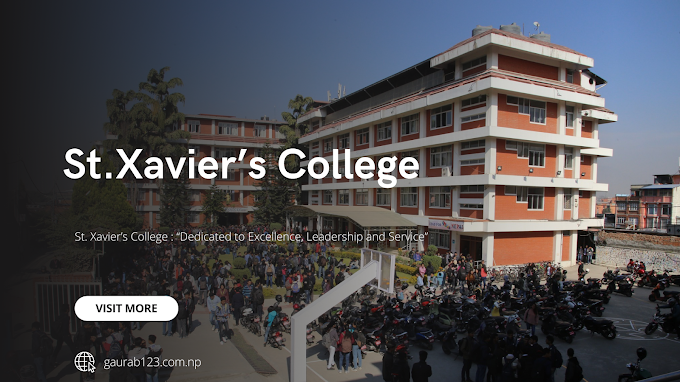Are you just starting your journey into full-stack development? Whether learning for fun, enhancing your skills, or preparing for a tech career, diving into beginner-friendly full-stack projects is a great way to gain hands-on experience. In this article, we'll explore 5 easy full-stack projects for beginners in 2024 that will help you build a strong foundation. These projects focus on combining front-end and back-end skills, giving you a well-rounded understanding of how full-stack applications work.
1. Personal Portfolio Website
Difficulty Level: Easy
Tech Stack: HTML, CSS, JavaScript, Node.js (or Django/Flask), MongoDB (optional)
A personal portfolio website is one of the most straightforward full-stack projects, perfect for showcasing your skills and projects to potential employers or clients. Start by designing a sleek front-end using HTML, CSS, and JavaScript to display your bio, resume, and completed projects. You can add a simple back-end to manage contact forms using Node.js with a service like MongoDB for storing contact messages.
Features to Implement:
- A responsive design
- Contact form with validation
- Option to fetch data (e.g., recent blog posts or GitHub projects) via APIs
- Optional: Admin panel to manage the portfolio (e.g., update project descriptions)
What You’ll Learn:
- Front-end development basics
- Simple routing and form handling in the back-end
- API integration
2. To-Do List Application
Difficulty Level: Easy
Tech Stack: React.js, Node.js (Express), MongoDB
A To-Do List is a classic project that combines front-end logic with back-end data management. Use React.js to build the front-end, where users can add, edit, and delete tasks. The back-end, powered by Node.js and Express, can handle task data, storing it in a database like MongoDB. This project will help you understand CRUD operations (Create, Read, Update, Delete) in a practical setting.
Features to Implement:
- Add, edit, and delete tasks
- Mark tasks as completed or pending
- Store tasks in a database for persistent data
What You’ll Learn:
- React hooks and state management
- REST API creation using Express
- MongoDB data modeling
3. Blog Platform
Difficulty Level: Moderate
Tech Stack: HTML, CSS, JavaScript (or React), Node.js (Express), MongoDB/MySQL
A blog platform is an excellent project to dive deeper into full-stack development. It involves creating both a front end where users can read and comment on blog posts and a back-end to manage posts, comments, and user authentication. For simplicity, you can build the front end with plain HTML, CSS, JavaScript, or React. Use Node.js with Express for the back-end, and MongoDB or MySQL to store blog data.
Features to Implement:
- Display a list of blog posts
- User authentication (login/sign-up system)
- Admin panel to create, update, and delete posts
- Comments section for users
What You’ll Learn:
- User authentication and session management
- Building RESTful APIs
- Data modeling for a multi-user platform
4. Simple E-Commerce Store
Difficulty Level: Moderate
Tech Stack: React.js, Node.js, Express, Stripe API, MongoDB
An e-commerce store is a fun and rewarding project. This project can start small with basic functionality like displaying products, adding them to a cart, and completing a purchase using the Stripe API for payment processing. The front-end, built with React.js, should display products and allow users to navigate through categories. The back-end can handle order management and product storage using MongoDB and Express.
Features to Implement:
- Browse products by category
- Add/remove products from a cart
- Payment integration using Stripe
- Order history and confirmation email
What You’ll Learn:
- API integration for payment systems
- Secure handling of user data
- Managing product and order data with MongoDB
5. Social Media Dashboard
Difficulty Level: Advanced
Tech Stack: React.js, Node.js (Express), MongoDB, WebSocket for real-time updates
Building a social media dashboard can introduce you to more complex full-stack features such as real-time updates and data management. The front-end (React) displays posts from users, while the back-end handles user authentication, post storage, and real-time notifications using WebSocket. You can add functionality for likes, comments, and even follow/unfollow features.
Features to Implement:
- Real-time notifications for likes and comments
- User profile creation and editing
- Follow/unfollow system for users
- Real-time feed updates using WebSocket
What You’ll Learn:
- Real-time communication with WebSocket
- Managing relationships between users and content
- Security best practices for user data
Final Thoughts
These 5 full-stack projects offer you a great way to get started with full-stack development in 2024. As you complete each project, you’ll gain practical experience with different tools and technologies, strengthening your coding abilities. Start with simpler projects, like the Personal Portfolio or To-Do List, and work your way up to more complex ones, like the Social Media Dashboard or E-Commerce Store. Happy coding, and remember—each project brings you one step closer to mastering full-stack development!














If you have any doubts, Please let me know